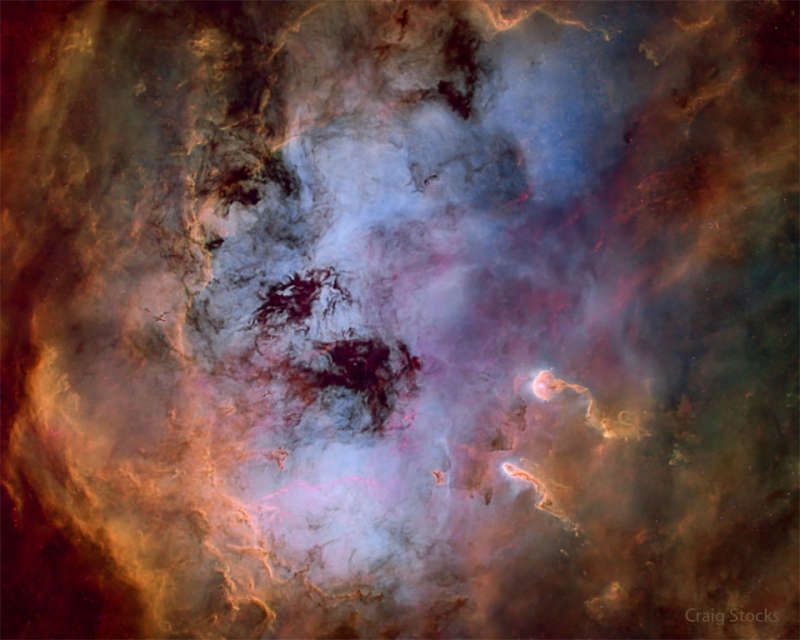Credit & Copyright: Craig Stocks
(Utah Desert Remote Observatories)
Explanation:
What's causing the commotion in the Tadpole Nebula?
Star
formation.
Dusty emission in the
Tadpole Nebula, IC 410,
lies about 12,000 light-years away in the northern constellation of the
Charioteer
(Auriga).
The cloud of glowing gas is over 100 light-years across,
sculpted by
stellar winds and radiation from embedded
open star cluster
NGC 1893.
Formed in the interstellar cloud
a mere
4 million years ago, bright newly formed cluster stars are seen
all around the star-forming nebula.
Notable on the lower-right of the featured image are two relatively dense streamers
of material trailing away from the nebula's central regions.
Potentially sites of ongoing star formation in
IC 410, these
cosmic tadpole
shapes are about 10 light-years long.
The image was processed
highlighting the emission from sulfur (red), hydrogen (green), and oxygen (blue)
gas -- but with the
stars digitally removed.
1999 2000 2001 2002 2003 2004 2005 2006 2007 2008 2009 2010 2011 2012 2013 2014 2015 2016 2017 2018 2019 2020 2021 2022 2023 2024 2025 |
Yanvar' Fevral' Mart Aprel' Mai Iyun' Iyul' Avgust Sentyabr' Oktyabr' Noyabr' Dekabr' |
NASA Web Site Statements, Warnings, and Disclaimers
NASA Official: Jay Norris. Specific rights apply.
A service of: LHEA at NASA / GSFC
& Michigan Tech. U.
|
Publikacii s klyuchevymi slovami:
star formation - tumannost' - pyl' - zvezdoobrazovanie
Publikacii so slovami: star formation - tumannost' - pyl' - zvezdoobrazovanie | |
Sm. takzhe:
Vse publikacii na tu zhe temu >> | |
